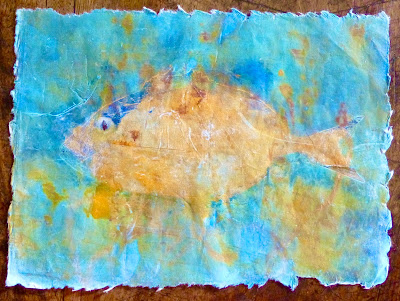 |
| " Pageot" and "bar" by Mary M Payne. |
It is time to show you that I have not been entirely idle... sitting around and playing video games or surfing You Tube while the pandemic rages around us.
Ok. Ok. I do admit to dabbling with a couple of games ...but only after I have completed 3 hours of slave labor in the garden or house and have completed a bike ride along the sea in the early morning hours.
I have to keep things in balance or I find myself falling down the rabbit hole. I find it particularly hard to be so far away from many of the people I hold most dear during this time fraught with questions and confusion. And even seeing local friends is prohibited now with the national lockdown.
So for a change of mood, I want to show you my last art project.
Our assignment was to use common printing techniques without using a press and to create ten images around the theme of the word "Empreintes". ...each image using one of the letters of the word.
There are hundreds of techniques used in schools and by art journal artists using found materials to make prints... particularly plants and vegetables. There is the gelatin plate for mono printing that I have reviewed before. There are sheets of rubber that can be carved into stamps..etc. And one can invent any number of print backgrounds with found materials. So where to start...
I have always had a remote fascination for the Japanese
process of fish printing called Gyotaku. Gyo( fish) taku (stone impression) was used first by the Samurai in the mid- 1800's to record the largest of the "catch" and for fishing competitions. Since that time it has been the technique for many an artist and is used regularly in Japan today to record particularly impressive fish or memorable fishing expeditions.
It requires a deceased fish ( a dead fish sounds callous and smelly), some ink and some rice paper. The object is also, for me anyway, to eat the fish afterwards...lest it be killed for naught. I couldn't find cuttle fish ink but I researched India ink and believe that it is non toxic.
As a theme for the project I chose " Marine life of the Mediterranean".
The first thing was to bring home a fish and try it and to that end I found that the corner market had cleaned and scaled "bar" ( sea bass) packaged and ready to eat.
After an hour of experimentation with my first fish, I found that too much ink produces little definition of scales (or ink blots) and too little ink leaves a blank spot on the paper.
To even out the ink then, I used a make-up sponge as a dabber and experimented with how to hold the fins out to be inked as well ( very difficult). In the end I made a cradle to hold the fish by cutting a lozenge shape in a piece of heavy cardboard. And I diluted India ink and used a thin rice paper made for calligraphy.
Here is my first attempt...with the sea bass.
I also used my little Chinese chops that I am so fond of. The teacher was not amused and refused to allow them in the series. One of these is my name in Chinese characters and the other one reads: " pervasive moonlight...meaning home, hearth and family.


No comments:
Post a Comment